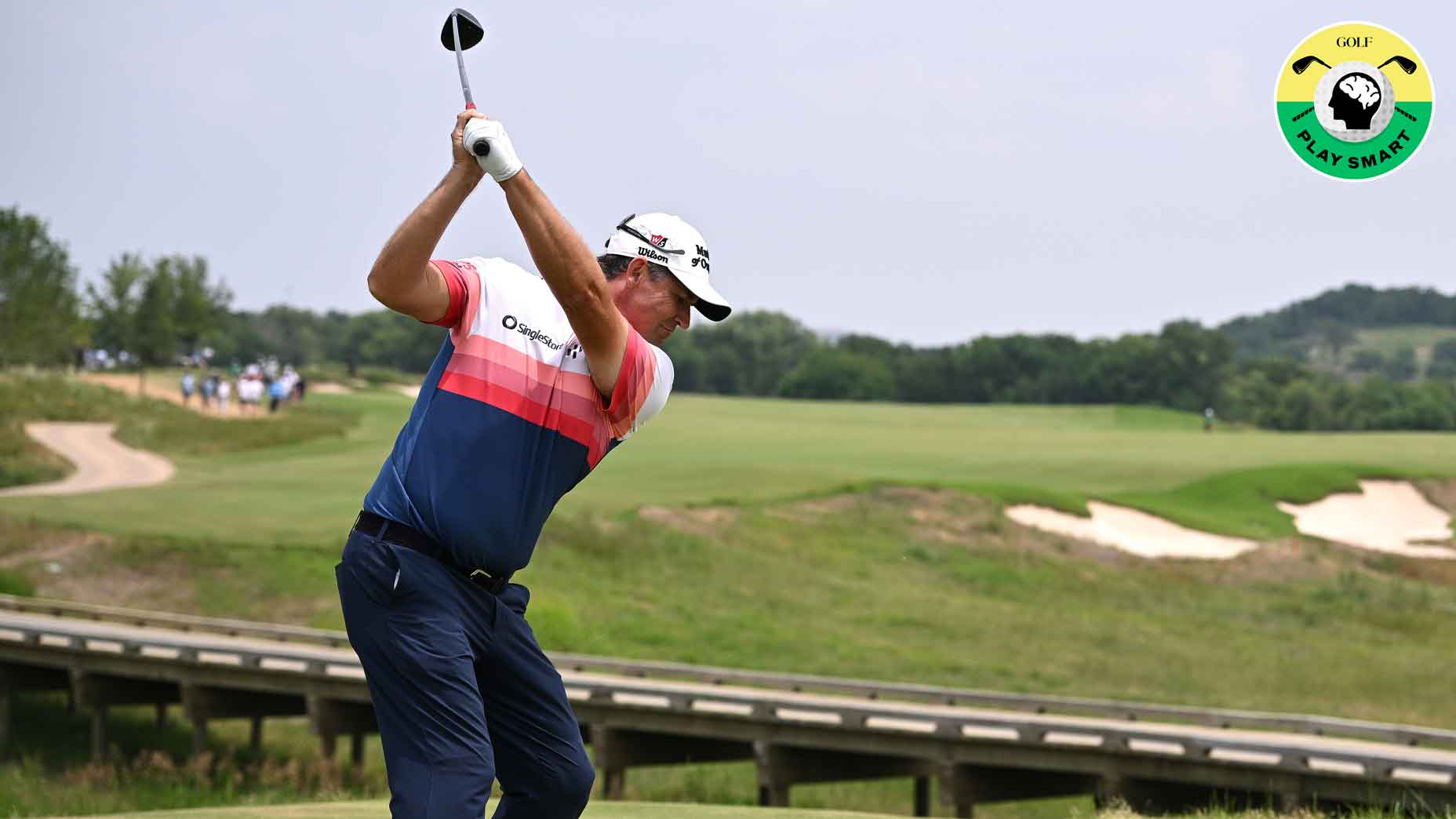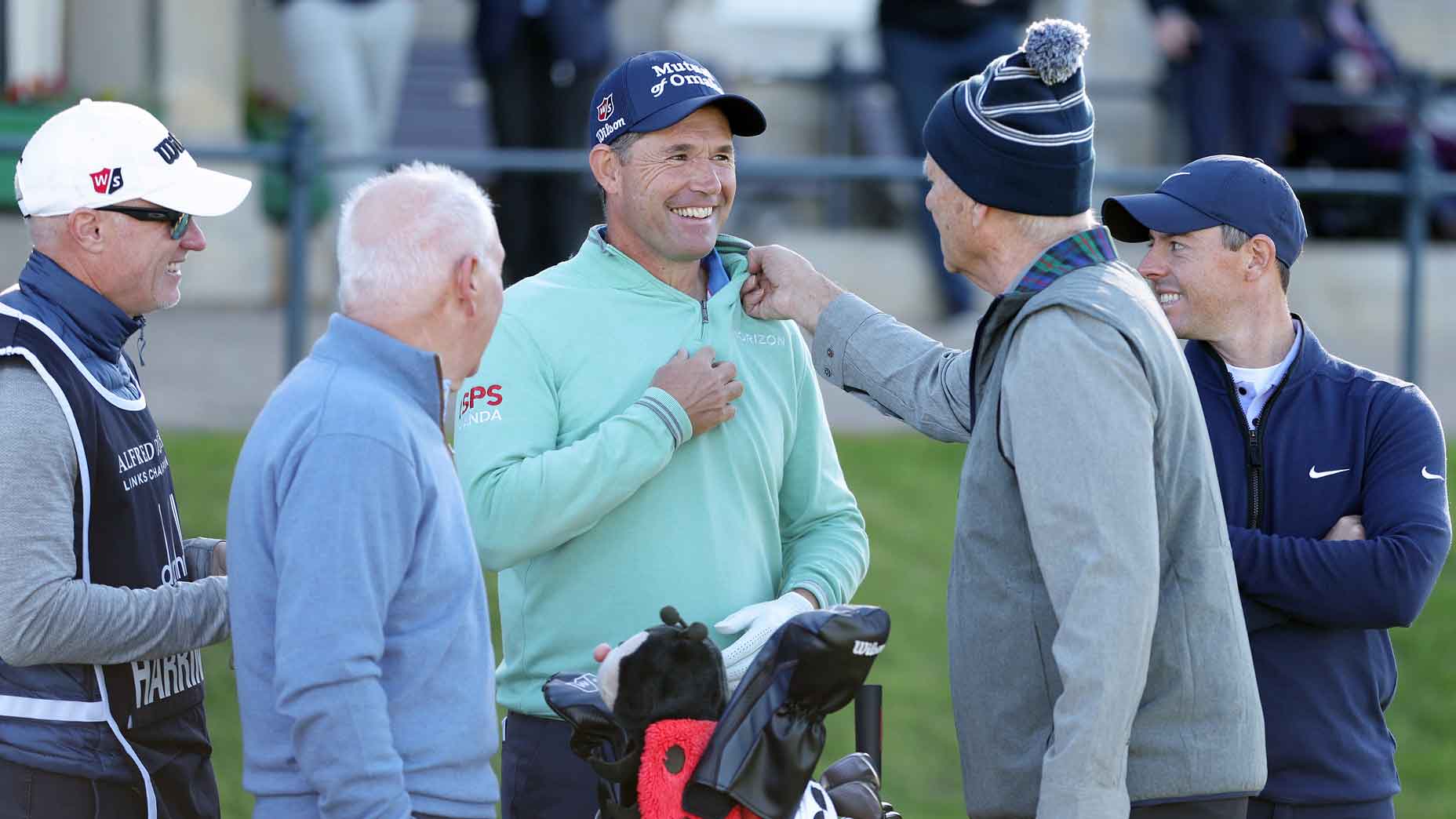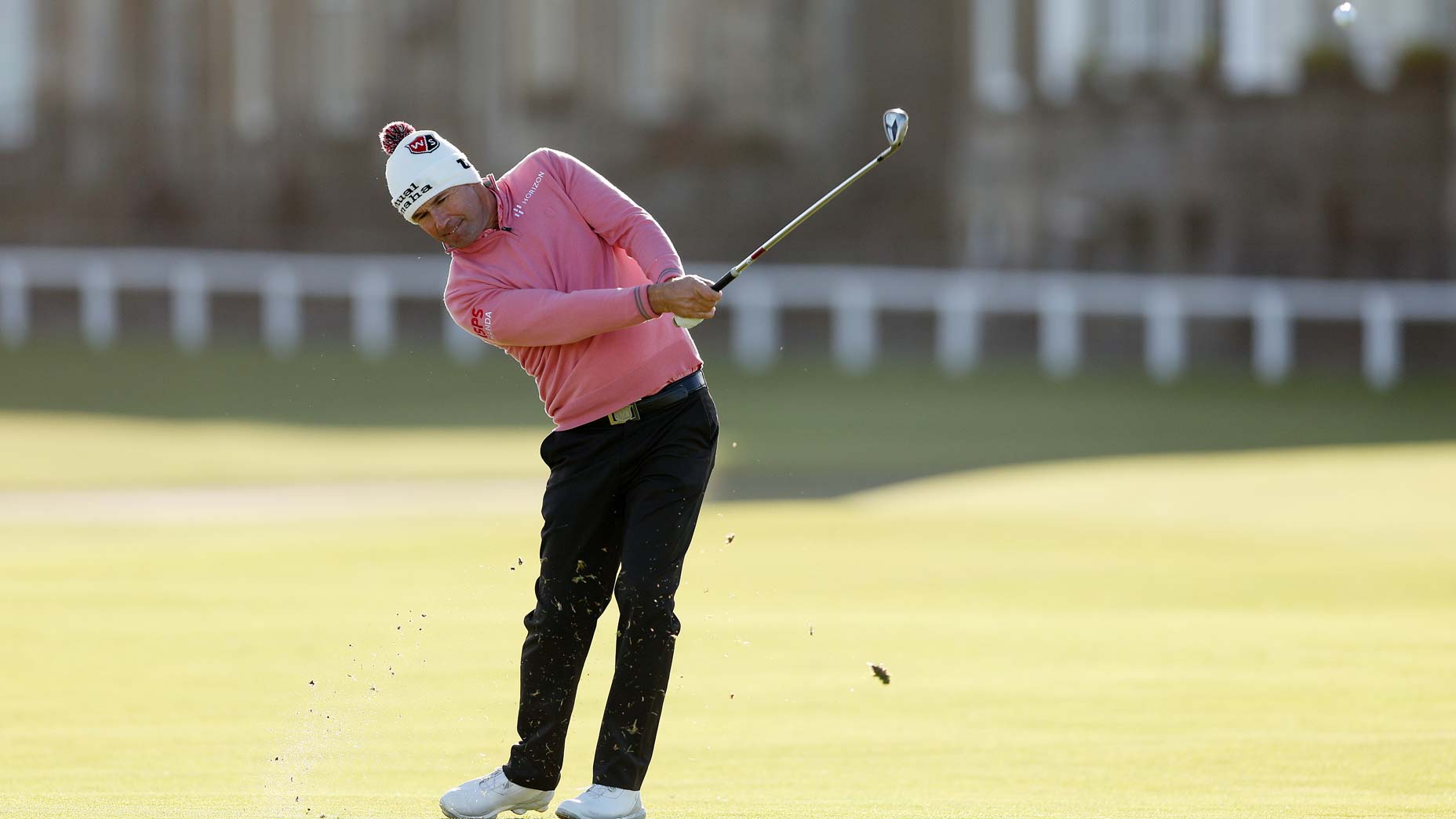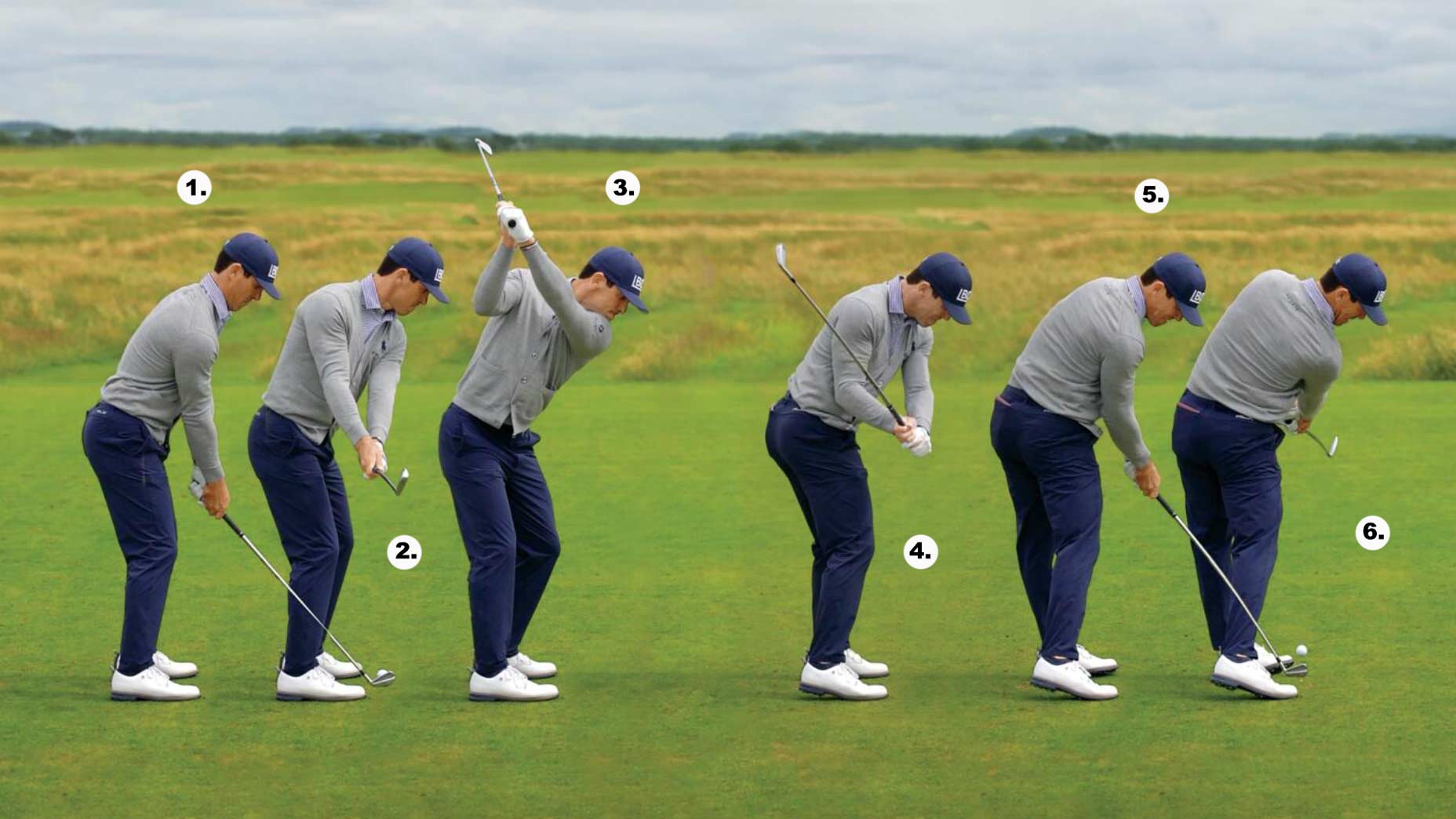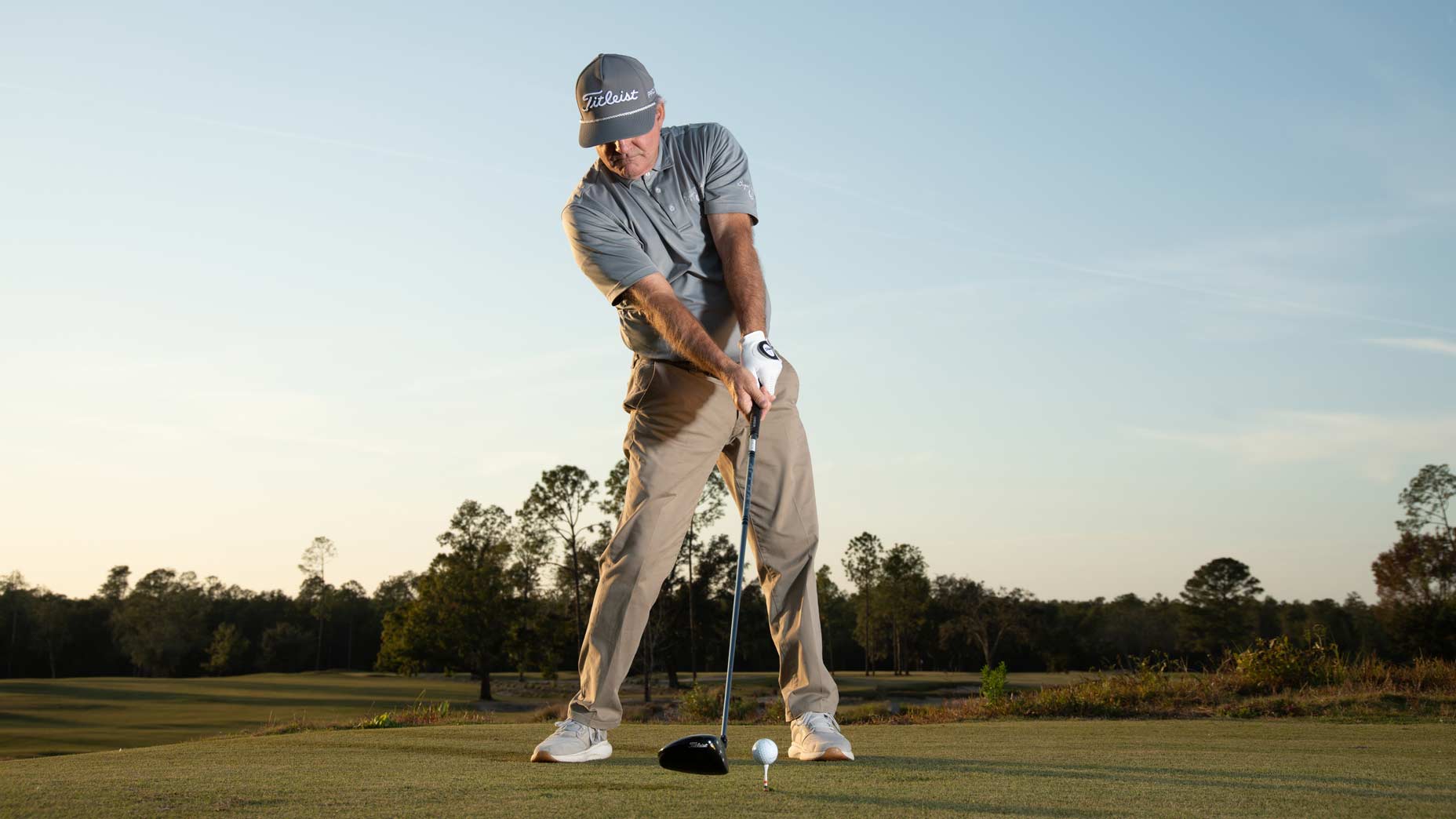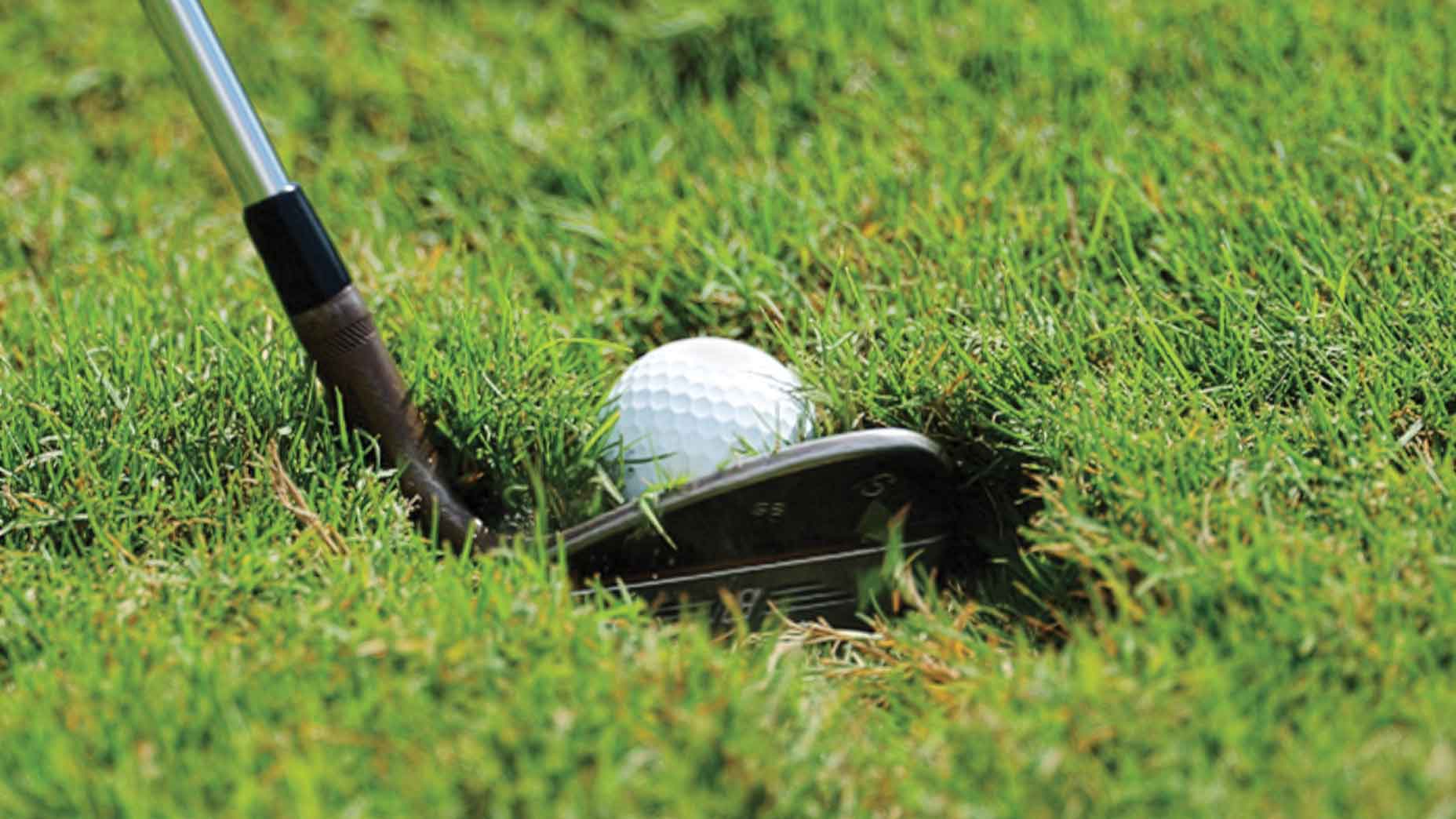Welcome to Play Smart, a regular GOLF.com game-improvement column that will help you play smarter, better golf.
Padraig Harrington has seen great success no matter what pro Tour he’s played on. His career notably includes three major championships during his time on the PGA Tour, and one senior major, the 2022 U.S. Senior Open.
Sure, Harrington can point to a number of different factors that have led to his accomplishments, but one of his biggest strengths has always been his ability to drive the golf ball with accuracy and tremendous length off the tee.
One stat I found really interesting that highlights this? How about the fact that he’s driving the ball about 15 yards farther off the tee today at age 51 than he did 10 years ago (303 yards compared to 288 yards).
That type of power doesn’t just happen with good luck or great genes. It’s something Harrington works tremendously hard at — and in today’s Play Smart, he’s giving his tips for increasing club speed, helping amateurs see longer shots with the driver.
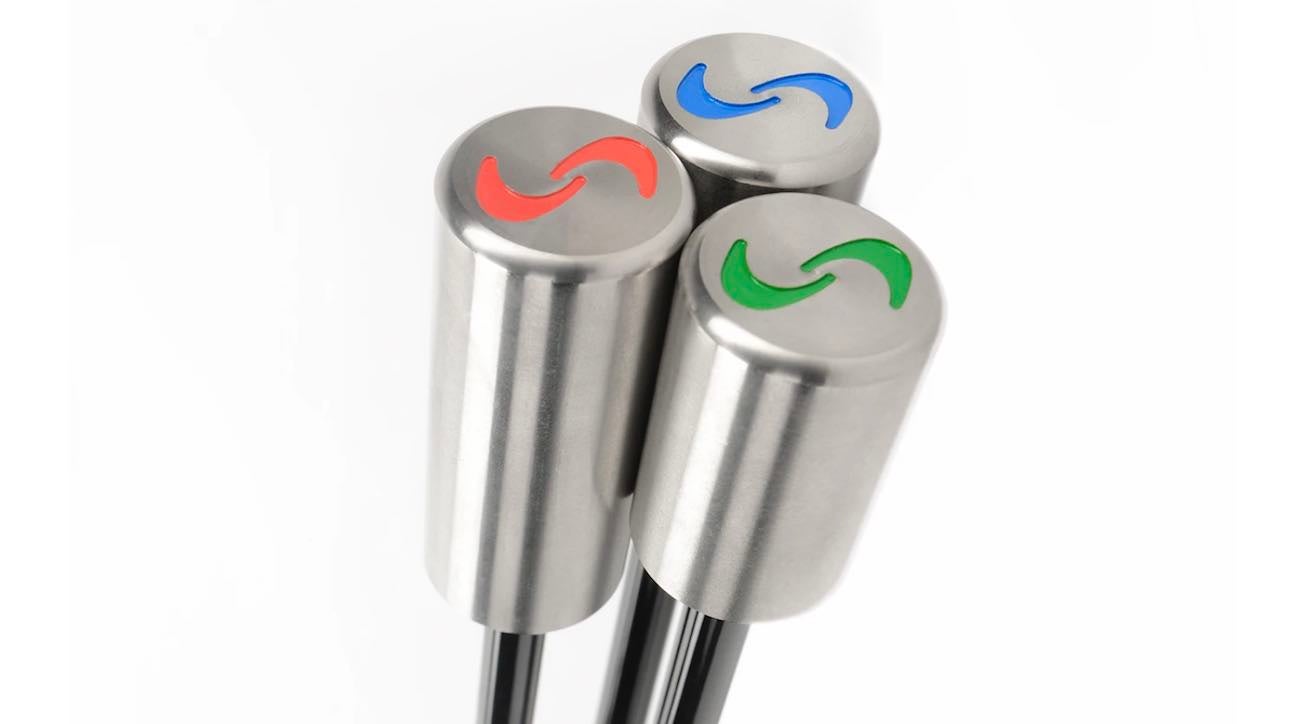
SuperSpeed Golf Training System
Harrington attributes a lot of his success off the tee to the SuperSpeed Golf Training System, which he says gives “instantaneous feedback,” which he thinks is important for every amateur.
“You need to have a goal, a purpose, and some feedback,” Harrington says. “So the SuperSpeed sticks provide it very well. You’re swinging. You’ve got purpose. You’ve got a PRGR monitor.”
Although the training system does provide helpful speed programs, given his age, Harrington says he doesn’t stick to one specific routine each day. Instead, he says it’s important to listen to his body and determine what’s best for that day.
“As I’ve gotten older, I train how I feel,” he says. “So I don’t do a training program. I do a training program for how I feel. If I feel good, I do it.
“So I have changed. I think I’ve done speed training all my life, and I know for the last 20 years, I’ve always been tinkering with it. And I could always get very good, high speeds over the years.
“It’s not as easy to just say, ‘I’ll train every three days for speed,’ it doesn’t work like that as you get older.”
Harrington’s other tips for increasing clubhead speed
When I asked Harrington about the most important factor for increasing clubhead speed, without hesitation, he said “variation.”
So what does that mean for the average golfer? In Harrington’s opinion, it’s about overcoming the mental hurdle of swinging the club harder.
“It’s amazing how many golfers want to increase their speed by going to the gym and doing speed drills,” he says. “But when they go back to playing golf and they swing, they think it’s all just going to happen on the golf course without actually swinging harder. So the first thing they need to do is to mentally learn how to swing harder at the golf ball.”
That’s where Harrington says the help of the SuperSpeed Golf Training System can be a major benefit.
“So that’s what the speed sticks are about. There’s no inhibition when there’s no ball contact there. So you will learn how to swing harder that way.”
Another tip that Harrington says works effectively for him is swinging harder during his practice sessions.
“When I’d go to the range and practice, I could get ball speeds into the 190s. But when I’d go play, I’d be about 174 ball speed or something,” he says. “So I keep doing my speed work. I still do gym work. But I actually hit the golf ball harder in practice. That’s really what I do when I go.
“On a cold day, on a warm day, I try to put as much effort into my swing; and that really helps me mentally to transfer that clubhead speed to the golf course.”
Padraig Harrington played with amateurs for a week. He found 2 key takeawaysBy: Nick Piastowski
So is there a certain percentage of practice that amateurs should focus on for speed training? Surprisingly, Harrington says it should only take up about 15 percent of your time at the range — or 20 balls for every 150 shots.
“I would recommend that you’re doing 20 balls at the end of your session, flat out,” Harrington suggests. “Take those 20 balls and try to lose any inhibition about the shot outcomes. You’re not trying to do anything but swing as hard as you can. Do that once or twice a week.”
As for those players who don’t have enough free time to head to the driving range that often? That’s where SuperSpeed comes in again, since you can practice from nearly anywhere.
“If you say you don’t have time, you can do the speed stick stuff at home. That’s easy, and it’s low-hanging fruit. You just need a speed monitor to measure your results, and then try to transfer that speed over to the next time you’re on the range.
“Remember, you’re not trying to hit anything any farther, you’re trying to hit the same distance that you can hit it now with ease,” he adds. “If you’re at that number — whatever your average ball speed is — you don’t need more ball speed on the golf course. You just want to be at that number with less effort.”
While there are many misconceptions about the different ways for increasing clubhead speed, Harrington says it’s important for recreational players to keep an open mind and continue to evolve.
“You just have to keep a whole menu of stuff that you work with and try,” he says. “And you’ll go, ‘you know what? A slower backswing works for me today.’ Or maybe more legs work, maybe more arms work, maybe more hands work. Maybe just hit the hell out of it. Maybe moving your feet works.
‘Sometimes hitting it too well is a problem:’ Padraig Harrington explains links golfBy: Jack Hirsh
“Just when you think you’ve found the Holy Grail, two weeks later it’s plateaued, and you need something else to stimulate your central nervous system.”
Finally, Harrington says some basic rules for amateurs should be using their feet and avoiding stillness before swinging the club, as well as working towards a shorter, quicker backswing.
“If you were standing waiting on a tennis ball, you’d be bouncing up and down on your toes getting ready. So I certainly think the idea of tightness and coil and stillness is not the way to go. Use some movement.
“Next, concentrate on swinging your hands and arms and getting them moving fast. Your body and hips will follow them,” he says. “So every person should try to get a shorter backswing. Shorter and harder is generally better than long. Since most people aren’t flexible enough to go long, they try to change it, and then they lose their elasticity in the backswing.”
